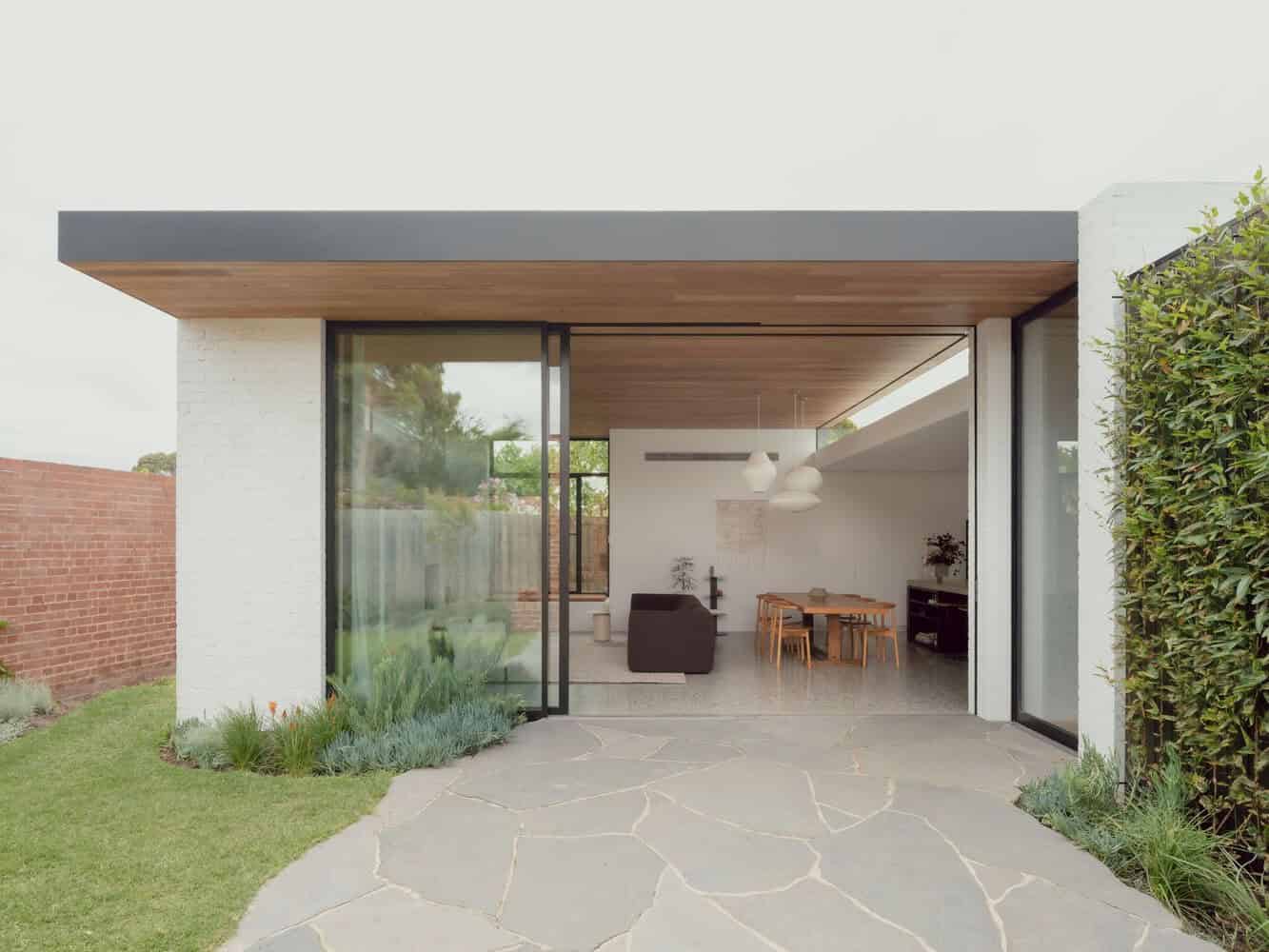Project: Preston House 01
Architects: Healy Ryan Architects
Location: Preston, Australia
Area: 1,969 sf
Year: 2021
Photographs by: Dan Preston
Preston House 01, designed by Healy Ryan Architects in Preston, Australia, is a beautiful blend of heritage and contemporary design. The project involved updating a heritage-listed Californian Bungalow and extending the space to accommodate a young, growing family’s needs. The rear extension features exposed brick walls that pay homage to the history of the original building, while large windows and glazed doors delicately connect the new space with the brickwork.


The brief for the project was quite typical for a residential block in inner Melbourne. A heritage-listed Californian Bungalow, showing its age, required some general updates as well as some additional space to suit the needs of the owners, a young, growing family. We and the client were keen to pay respect to the history of the original building. Aside from the obvious economic and environmental benefits of recycling the demolished bricks from the original lean-to, we felt there would also be nice potential from a heritage perspective; to instill some of the characters of the old into the new.
The rear extension comprises a series of 350mm thick exposed brick walls, with windows, doors, and walls recessively fitting in-between and around them, connecting to the brickwork as delicately as possible. Two of the largest of these walls sit at the end of the original hallway, creating a powerful impression upon entry to the new rear space. Openings through these walls lead to the rumpus or kitchen/living/dining rooms and continuing between the walls leads out to the rear garden via a 3.3m high glazed pivot door. The original hallway continues into the rear extension and is mirrored above with timber-lined eaves, providing ideal shading to the 3.3m high north-facing stackable glazed doors.
The roof design extends the elemental logic of the extension. Large, floating roof forms are separated from adjoining walls by long, highlight windows. A lower (2.6m) height ceiling in the kitchen and rumpus allows the roof above to respectfully slide under the existing exposed rafters at the connection point to the existing building. A lower ceiling was also desired to provide a more intimate spatial quality, when compared with the vast 3.3m timber-lined ceilings in the dining and living, and also give dynamism to the rear space.
The mass of brick walls is balanced by the textural feel of the interior spaces. Blackbutt timber boards line the ceilings and the textural quality of the painted recycled bricks, and the concrete floor ensures the space doesn’t feel stark or cold. Floating pendant lights over the dining table, dark timber veneer on the island bench and muted green cabinetry along the back wall further soften the atmosphere of the space.
This website uses cookies.